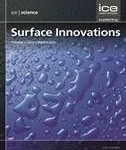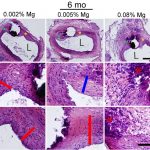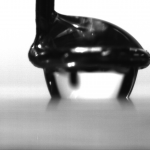The Surface Innovations journal celebrates its 10th anniversary in 2022. In celebration of this anniversary, we will publish six issues instead of five. This first issue of 2022 offers the Invited Feature Article, Innovation Letter and six Original Research papers on a broad variety of topics. Hope you will find research inspirations after reading some of the following papers:
Defects and passivation in perovskite solar cells; Yaobo Li, Zhaohan Li, Fangze Liu, Jing Wei; 10(1), pp. 3–20
Elimination of wetting study flaws in unsaturated vapors based on Laplace fit parameters; Elizaveta V Chulkova, Kirill A Emelyanenko, Alexandre M Emelyanenko, Ludmila B Boinovich; 10(1), pp. 21–24
Facile approach for modulating wetting of hierarchically structured metallic surface; Jayanth Ivvala, Priya Mandal, Harpreet Singh Arora, Harpreet Singh Grewal; 10(1), pp. 25–36
One-step deposition of stable superhydrophobic coatings with controllable wettability; Dexin Chen, Yinying Sheng, Zhixin Kang, Wei Li; 10(1), pp. 37–47
Phytotoxicity of silver nanoparticles and silver ions toward common wheat; Anna Gorczyca, Ewa Pociecha, Julia Maciejewska-Prończuk, Monika Kula-Maximenko, Magdalena Oćwieja; 10(1), pp. 48–58
A novel cobalt-free and CO2-stable LDC-LSCF membrane with high oxygen permeability; Xinle Zhang, Tianyi Chen, Yongjun Xu, Chenghua Sun, Chengzhang Wu; 10(1), pp. 59–67
Nitrate removal from aqueous solution by way of adsorption on modified sheep wool; Mária Porubská, Marcel Cvik, Klaudia Jomová, Zuzana Branišová, Jana Braniša; 10(1), pp. 68–75
Polyethyleneimine-modified magnetite prepared without a base to remove Congo red in water; Yu Liu, Ying Gan, Cong Zhao, Maoqiong Xie, Dongxu Gu, Shirong Shuai, Hongyu Zhu, Jianyuan Hao; 10(1), pp. 76–85
Please join us in celebrating our 10th anniversary.





